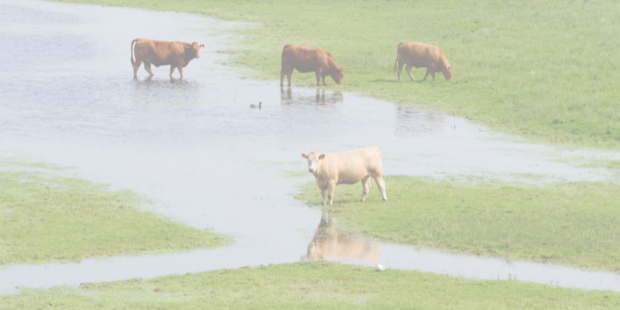The arrival of spring brings together a greater volume of rain, which directly impacts agriculture. This period is considered a great time to start new projects and crops. After all, the weather conditions favor these plans. It is the perfect time to increase the pace of work and increase production. It also requires an increase in staff and labor to perform the management in the best way possible.
Despite being a moment of renewal in the sector and the beginning of a new production cycle, the period also raises a concern: the increase in pest infestation. The hot and humid climate favors the biological cycle of pests. The multiplication and infestation occur more quickly, being a point of attention for the producers. This is the ideal setting for the development of ticks. With the arrival of rains, these parasites increase infestation in animals and contaminate the environment more easily.
Rains and ticks: a dangerous combination
The environmental conditions found during the rainy season directly favor the development of ticks. The fertilized females are in the best scenario to detach themselves from the animals and release the eggs into the soil. At the same time, environmental conditions facilitate the hatching of larvae from eggs laid on pastures.
Each female tick can lay up to three thousand eggs. With favorable conditions and ineffective treatment, the parasite can increase damage to the herd. High infestations, especially during the rainy season, are quite dangerous. It directly impacts the health and productivity of the herd. Animals may experience weight loss, and reduced milk production, in addition to favoring the development of bovine parasitic sadness.
How should the cattle farmer prepare?
The first guideline is to prepare to manage the animals and the pasture well. In this way, management errors are mitigated, respecting the herd’s welfare. The first generation of tick infestation appears in the spring months. It is conditioned by the increase in the air’s average temperature and relative humidity (beginning in the rainy season). It is important to point out that the development of each generation suffers a direct impact from the previous one. For this reason, the success of the control depends on reducing the parasite in the first generation. Taking the right control measures early on prevents infestation growth, and control is more efficient.
When assessing the total distribution of ticks, most of the population is in the environment. About 95% of the general population settles on pastures and only 5% on animals. For this reason, by knowing the parasite’s life cycle and knowing that it is favored by rainfall, the producer must plan the most effective control to reduce infestations.
How to prevent infestations
It is recommended that the treatment begins before the rainy season. In this manner, we avoid the high number of ticks in periods of great infestation. However, applications of acaricides should not be concentrated on animals when they have a higher number of ticks. Prevention should be based on constant monitoring and observation of animals. There’s no rule when it comes to tick control. Action must be based on knowledge of the parasite’s life cycle. Treating animals and pasture infestations in a planned manner is the best way to reduce the problem.
The producer needs to plan the acquisition of control products. Ideally, the treatment should take place before the rains arrive. If necessary, the producer should seek the advice of specialized professionals. When the problem is still in its infancy, the impacts are lower. The herd is tick-free and ready to perform at its best through assertive control.



